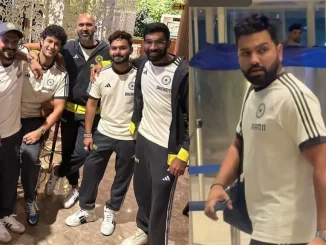The transition from IPL to T20 World Cup
Over the past two months, cricketers and fans have been obsessed with the IPL tournament. Everything revolved around the IPL. However, players and sports enthusiasts need to transition out of that mindset, as the rules of IPL differ from those of international cricket. Therefore, the IPL rules will not apply here.
In the 17th season of IPL, Kolkata Knight Riders defeated Sunrisers Hyderabad by 8 wickets. With this victory, Kolkata won the title for the third time. Now the thrill of the T20 World Cup can be felt in America West Indies.
Key Rule Differences
Impact Player Rule
One of the most notable differences between IPL and international T20 cricket is the absence of the impact player rule in the latter. The IPL’s impact player rule allowed teams to make a strategic substitution to influence the game, contributing significantly to high-scoring matches. However, in the T20 World Cup, teams must stick to the traditional format, submitting a list of 11 players after the toss without the option for such a substitution.
DRS for Wide and No Ball
The Decision Review System (DRS) in the IPL included provisions for reviewing wide and no-ball calls, adding a layer of strategic depth to the game. This rule, however, does not extend to international T20 matches. In the T20 World Cup, players will not have the option to use DRS for wide or no-ball decisions, which can impact game dynamics and the decision-making process during crucial moments.
Join MyFinal11 WhatsApp Community
Bouncer Limit
The handling of bouncers also differs between the IPL and international T20 cricket. In the IPL, bowlers were allowed to deliver up to two bouncers per over, but the T20 World Cup restricts this to just one bouncer per over. Any additional bouncer will be deemed a no-ball or wide, necessitating a tactical adjustment from bowlers who relied on the extra short-pitched delivery as part of their strategy in the IPL.
Strategic Time Outs
Another rule unique to the IPL is the strategic timeout, where each inning includes two breaks of 2.30 minutes each. These timeouts allowed teams to reassess and adjust their strategies based on the state of play. In the T20 World Cup, no such strategic timeouts are allowed, requiring teams to continuously adapt on the field without designated breaks for re-evaluation and strategy modifications.
Preparing for the T20 World Cup
As the excitement for the T20 World Cup builds, players and fans must transition from the IPL’s unique regulations to the standardized international rules. Understanding and adapting to these differences will be crucial for teams aiming for success in the tournament. The month-long competition promises thrilling cricket as the world’s best teams compete under the established framework of international T20 cricket.



![Indian Cricket Team - India vs Ireland Dream11 Prediction, Grand League/Small League Fantasy Tips | IND vs IRE | 8th Match, ICC T20 World Cup [5th June 2024]](https://myfinal11.b-cdn.net/wp-content/uploads/2024/06/India--326x245.webp)
